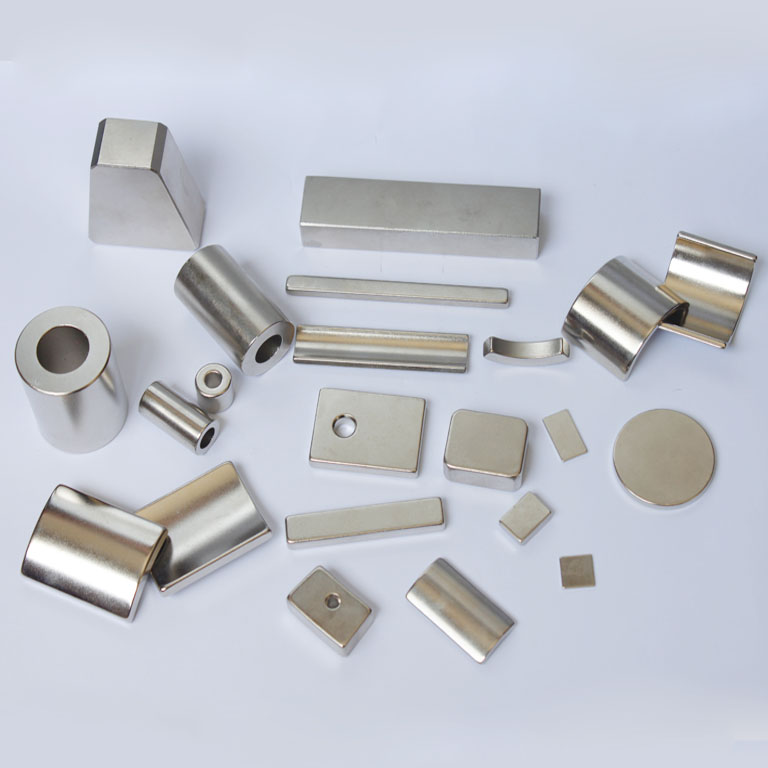1) Material Classification
Hard Magnetic Materials (Permanent Magnets): Coercivity ≥10 kA/m,Typical representatives. NdFeB (Neodymium Iron Boron), AlNiCo (Aluminum Nickel Cobalt), SmCo (Samarium Cobalt).
Soft Magnetic Materials:Coercivity ≤1000 A/m. Common types Silicon Steel, Ferrite, Nanocrystalline Alloys.
2) Fundamental Physical Quantities
Magnetic Field Strength (H): Physical quantity describing magnetic field intensity and direction. Unit: A/m (independent of magnetic medium).
Magnetic Flux Density (B): Characterizes the magnetic field's effect on materials (flux per unit area). Unit: Tesla (T).
Magnetic Flux (Φ): The quantity of magnetic flux passing through a certain area, Φ = B·S, is measured in webers (Wb).
3) Magnetic Property Parameters
Initial Permeability (μᵢ): Permeability limit at the start of static magnetization curves, reflecting material's initial magnetization capability.
Effective Permeability (μₑ): Comprehensive permeability of a gapped closed magnetic circuit.
Coercivity (H_c): Reverse magnetic field strength required to reset magnetization to zero. Core parameter distinguishing hard/soft magnetic materials.
Remanence (B_r): Residual magnetic flux density retained after external field removal.
4) Measurement Instruments
Fluxmeter: Instrument measuring magnetic flux variation via electromagnetic induction (integration of induced EMF).
Gaussmeter: Specialized device for detecting magnetic flux density (B), widely used in quantitative field analysis.
Magnetometer: General-purpose equipment for measuring magnetic field strength (H) across multiple ranges.
5) Application-Related Terms
Inductance (L): Circuit property describing induced electromotive force during current changes. Unit: Henry (H).
Common Mode Choke: Bidirectional filter suppressing common-mode electromagnetic interference (EMI) in power/signal line designs.
Eddy Current: Circulating currents induced in conductors by varying magnetic flux, causing energy dissipation.
6) Standards & Specifications
Standard Magnetic Material Samples: Calibration standards developed by metrology institutions for magnetic property parameter verification.
Terminology Classification: Physical Quantities (e.g., permeability, coercivity), Non-Physical Terms (e.g., magnetic core, ferrite).

 中文
中文 










